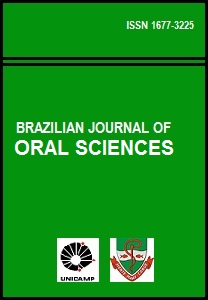Abstract
Aim: To describe the characteristics of the professional training of dentists and physicians who treat patients with pain. Methods: A sample of 87 dentists and 63 physicians, selected at random and based on a stratified strategy, responded to a questionnaire with questions about training in pain. The statistical analysis of the data was done by the chi-square test and the Student’s t-test at a 5% significance level. Results: The mean age was 45 years. There was no gender prevalence among the dentists and a male predominance among physicians; 80.20% had worked professionally for more than ten years; 81.61% of the dentists and 79.37% of the physicians were specialists. Residence training was reported by 55.56% of the physicians and 12% of the dentists; 48.27% of the dentists and 34.92% of the physicians had a master’s and/or doctorate degree; 69.33% declared sufficient knowledge in pain; both physicians and dentists prioritized their own areas regarding the study of pain. The doctor/patient relationship was more valued by physicians, while the technical training was more valued by dentists. Dentists reported more difficulties in prescribing medications and physicians had more difficulties with the patient’s behavior. Conclusions: Dentists and physicians had different professional experience and had valued specific aspects of their specialty. There is a need for a uniform curriculum designed for training in pain.The Brazilian Journal of Oral Sciences uses the Creative Commons license (CC), thus preserving the integrity of the articles in an open access environment.
Downloads
Download data is not yet available.

